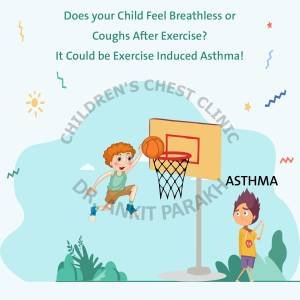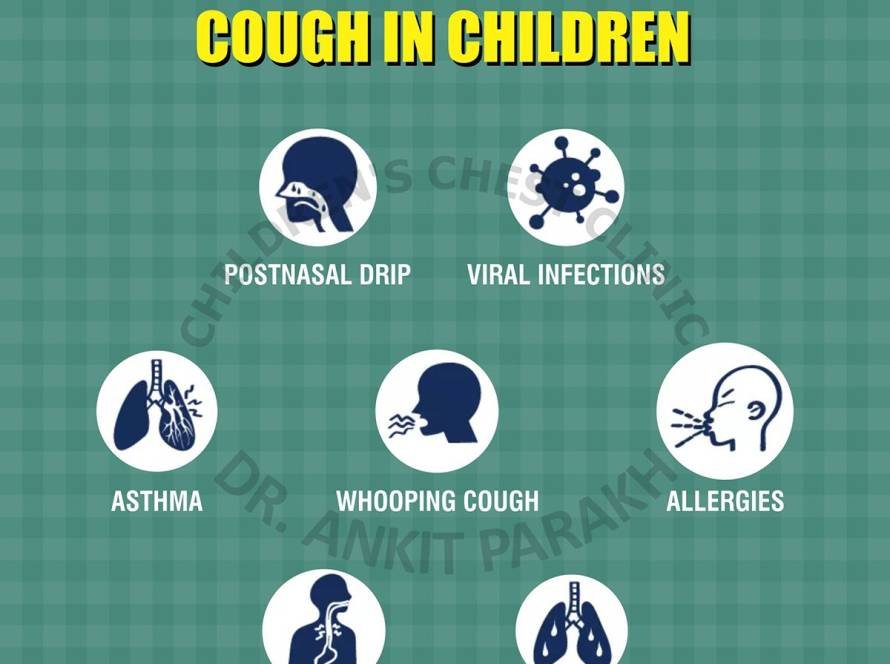Many children, adolescents and young adults develop symptoms of cough, shortness of breath, wheezing and chest tightness during or after exercise. Symptoms associated with exercise could be due to many causes like poor physical capacity, exercise induced laryngeal obstruction, exercise induced anaphylaxis and exercise induced asthma. Some children have persistent asthma and their symptoms worsen with exercise while some children have symptoms only during exercise. Children who have symptoms only with physical activity are said to have exercise induced bronchoconstriction.
What are the symptoms of exercise induced asthma in children?
Symptoms of exercise-induced asthma could be cough, shortness of breath or dyspnea, wheeze (whistling sound in chest when child breathes out) and chest tightness. Some children can have one symptom while some can have multiple of these. The severity of symptoms also varies from mild to severe. Symptoms of exercise induced asthma usually start within a few minutes after exercise and peaks within 10 to 15 minutes. Symptoms of exercise induced asthma usually settle within an hour of stopping exercise.
Why does exercise induced asthma happen?
During exercise the oxygen demand increases making the child breathe faster and deeper. During exercise the child breathes through the mouth leading to a dry and cool air reaching the lungs [breathing through the nose leads to air getting warm and moist]. The dry and cold air causes narrowing of the airways (bronchoconstriction) and inflammation leading to symptoms.
How do we diagnose exercise induced asthma in children?
A detailed medical case history and a physical examination is the starting point of the evaluation. This is usually followed by a baseline lung function or a spirometry. Spirometry measures how much air the child can inhale and exhale. Spirometry also measures how quickly the child can exhale air out of their lungs. Spirometry is usually repeated after a bronchodilator (inhaled medicine to open up the airways or bronchi). Final spirometry results depend on the baseline values and post bronchodilator values to see whether the medicine improved the airflow. Initial spirometry test is important to rule out persistent asthma as the cause of a child’s symptoms.
Exercise induced asthma is diagnosed by an exercise challenge test. During an exercise challenge test, the child is made to run on a treadmill or use other stationary exercise equipment like an exercise cycle. The exercise needs to be intense enough to increase a child’s heart rate and breathing rate which triggers the symptoms. Sometimes, a real-life exercise challenge can be performed like climbing stairs, running in a field etc. Spirometry or lung function tests are performed before and after the exercise challenge. A fall in the spirometry values by 10% indicate exercise-induced asthma.

How can we improve symptoms after exercise?
There are ways to reduce the symptoms of exercise induced asthma, so that the child is able to participate in all physical activities. Doing about 15 minutes of warm up exercise before the regular exercise has shown to be quite beneficial. Breathing through the nose to warm and humid the air is also quite helpful. Avoiding other asthma triggers (especially if known) can be helpful in children like pollen etc. Avoiding exercise outside in pollen season and high levels of air pollution is recommended.
Some children require pre-exercise medicine for adequate symptom relief. Short-acting beta agonists (SABAs) are the most commonly prescribed medicines. These medicines are taken in the form of an inhaler or puff and help to open airways. The commonly used short-acting beta agonists (SABAs) are salbutamol and levo-salbutamol. SABA should be taken 15-20 min prior to exercise. In some children SABA pre-exercise treatment alone doesn’t lead to complete relief of symptoms. In such situations long-term control medicine might be required such as montelukast or inhaled corticosteroids.
If your child is having any symptoms during or after exercise you need to get in touch with a pediatric pulmonologist for proper diagnosis and treatment.






